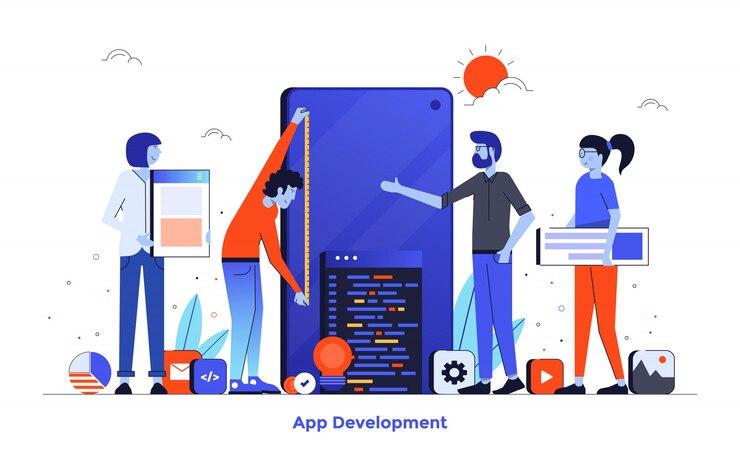Mobile App Development Process: A Step-by-Step Guide

Developing a mobile app is an exciting process that turns a simple idea into a powerful digital product. Whether it’s for business, education, lifestyle, or entertainment, understanding the full app development journey helps you avoid mistakes, save time, and deliver something users truly want.
In this guide, we’ll walk you through each step of the mobile app development process from choosing the right team to launching and scaling your app so you can plan better and build smarter.
1. Choose the Right Mobile App Development Partner
Your development partner plays a big role in your app's success. A skilled and reliable team brings your vision to life with the right technology, design, and strategy.
What to look for:
-
Experience: Check if they’ve built apps similar to yours. Look through portfolios and case studies.
-
Reputation: Read reviews and testimonials to gauge reliability.
-
Communication: Choose a team that communicates clearly and is open to feedback.
-
Location: Whether you go with a local team or an offshore company, prioritize talent, availability, and understanding of your industry.
2. Define Your Idea: Ideation & Conceptualization
Start with a strong foundation. Define the "what," "why," and "for whom" before diving into development.
-
Identify the problem: What issue does your app solve?
-
Understand your audience: Who will use it? What are their needs?
-
Analyze competitors: See what other apps are doing and how you can do it better.
-
Set goals: Define your app's main features and what success looks like.
3. Validate with Market Research
Before investing heavily, confirm that there’s a demand for your app.
-
Surveys & focus groups: Get real feedback from your target users.
-
Competitor research: Identify strengths, gaps, and user complaints in existing apps.
-
Prototyping: Create basic wireframes or mockups to test the flow and functionality.
4. Design the UI/UX
A great app looks good and feels easy to use. That’s where user interface (UI) and user experience (UX) design come in.
-
Wireframes: Blueprint layouts showing screens and interactions.
-
UI Design: Bring your brand to life with colors, typography, and layout.
-
User Flows: Map out how users move through your app.
-
Prototypes: Interactive mockups to simulate real usage before coding begins.
5. Start Development: Front-End & Back-End
This is where your app starts becoming real. Developers build both the visual (front-end) and server-side (back-end) components.
-
Front-End: The part users interact with buttons, screens, and design.
-
Back-End: Handles logic, databases, server processes, and user management.
-
APIs & Databases: Connect your app with services like payments or cloud storage.
Popular tools:
-
React Native, Flutter: For building iOS and Android apps from one codebase.
-
Node.js, Django, Laravel: Common frameworks for backend logic.
6. Test & Optimize (Quality Assurance)
Thorough testing is key to launching a stable, bug-free product.
-
Functional Testing: Are all features working?
-
Performance Testing: Is it fast and responsive?
-
Usability Testing: Is it easy to navigate?
-
Device Testing: Does it work on different phones and screen sizes?
-
Security Testing: Are user data and transactions safe?
7. Launch & Deploy
Now it’s time to release your app into the world.
-
App Store Submission: Prepare screenshots, descriptions, and follow Apple/Google guidelines.
-
Approval Process: Each store will review your app before publishing.
-
Launch Campaign: Promote via email, social media, ads, or PR to get your first users.
8. Post-Launch Maintenance & Support
Your app launch is only the beginning. Continuous updates keep it relevant and reliable.
-
User Feedback: Monitor reviews and in-app behavior.
-
Bug Fixes: Resolve reported issues quickly.
-
New Features: Add enhancements based on real usage data.
-
Performance Monitoring: Track app speed, uptime, and crash reports.
9. Market Your App & Monetize
Make sure people discover and keep using your app.
-
App Store Optimization (ASO): Use keywords, great visuals, and reviews to boost visibility.
-
Marketing: Promote through ads, content, influencers, and social platforms.
-
Monetization Options:
-
In-App Ads
-
In-App Purchases
-
Subscriptions
-
Paid Downloads
-
Conclusion
The mobile app development involves much more than writing code. From understanding user needs to post-launch updates, each phase shapes the success of your app. With a clear roadmap and the right team, you can build a product that users love and that grows with your business.


Comments